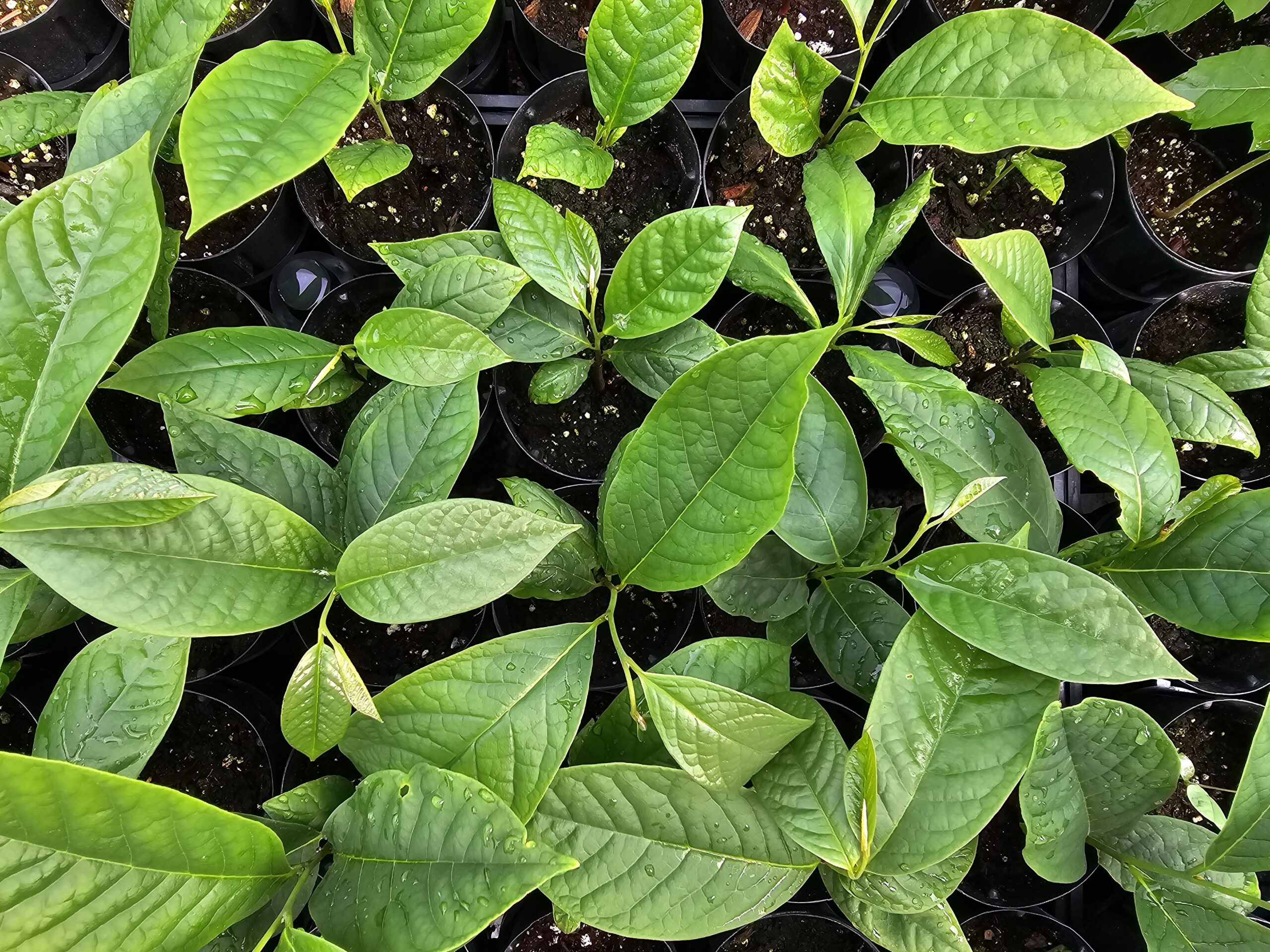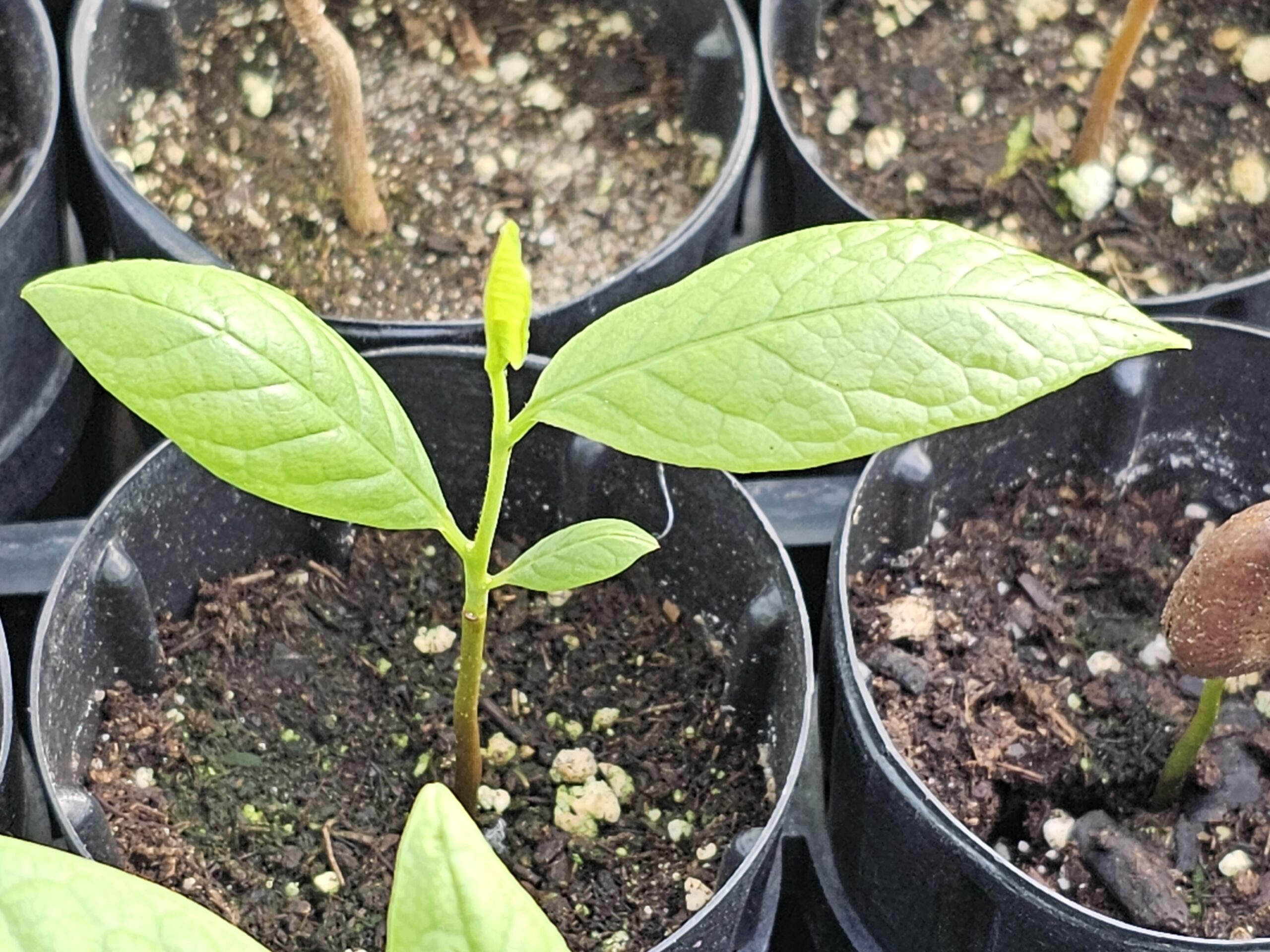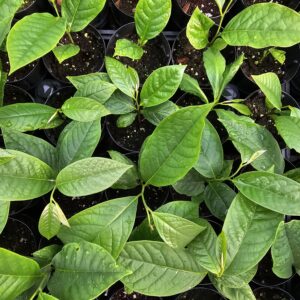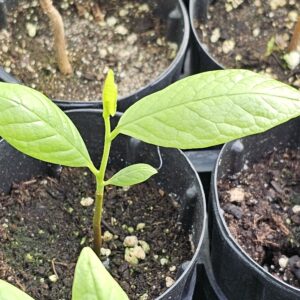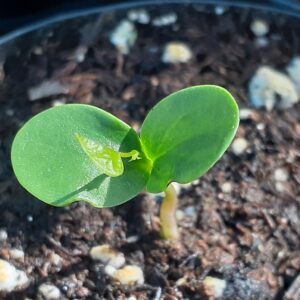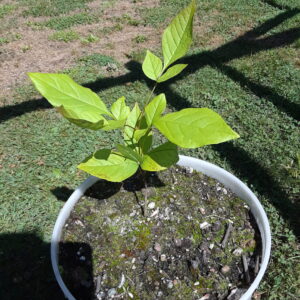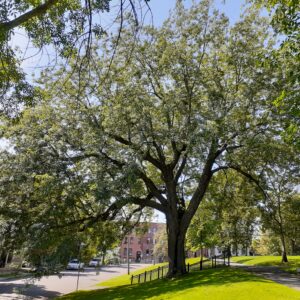Pawpaw
(Indiana Banana)
Asimina Triloba
A small, understory tree native to the Midwest and eastern United States that tends to spread, forming thickets that provide privacy. Attractive tropical-like, bright-green leaves with small purple flowers in spring, yielding large green to yellow edible fruits in fall. The fruits are very nutritious and tasty but not commercially available as they fare poorly with shipping and storage and have a short shelf life. Production should begin after 5 to 8 years. The male and female parts of each flower mature at different times so at least 2 genetically distinct trees must be planted if fruit is desired; more than 2 increases the chance.
Additional information
| Foliage | Deciduous |
|---|---|
| Locale | Native to North America |
| Height | Small (under 30ft) |
| Width | Narrow |
| Form | Multi Stemmed, Pyramidal |
| Growth Rate | Slow |
| Longevity | Short (under 50 years) |
| Hardiness Zones * | 5 |
| Sun Exposure | Full Sun (over 6 hrs), Mostly Shade (slow growth) |
| Soil Preferences * | Moist, Slightly Acidic, Well Draining |
| Soil Tolerances | Clay, Slightly Alkaline, Wet |
| Other Tolerances | Occasional Flooding, Urban Pollution, Walnut Toxicity |
| Ornamental Interest | Fruit, Flowers (attractive), Leaves (shape) |
| Human Value | Edible (fruit) |
| Wildlife Value | Birds (fruits/seeds), Insect Pollinators (flowers), Large Mammals (fruits/seeds), Small Mammals (fruits/seeds) |
| Seed Collection | Ordered Online |
| Planting Considerations | Intolerant of Drought, Messy Seed Litter, Produces Suckers, Tricky to Transplant |


